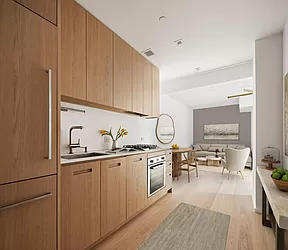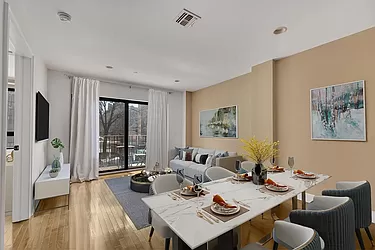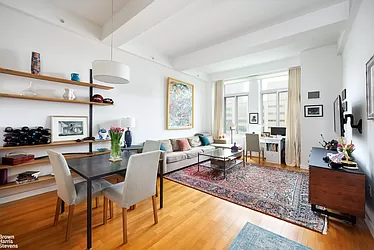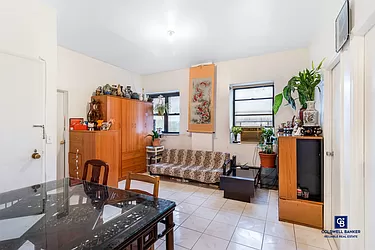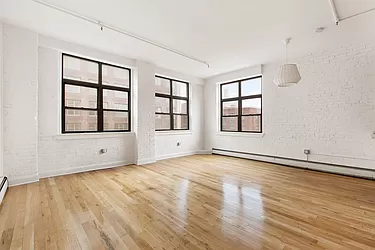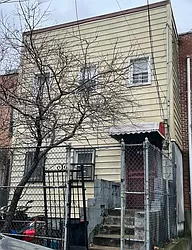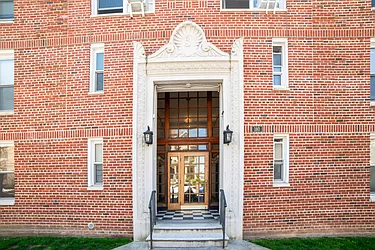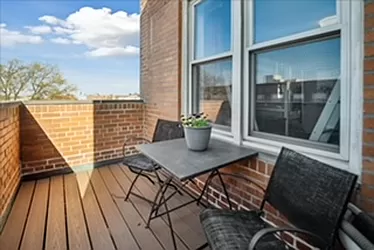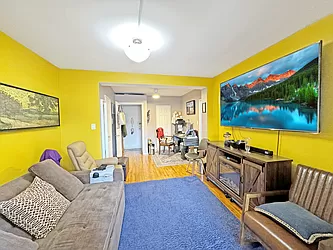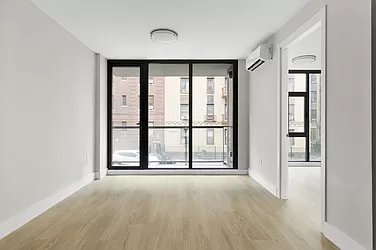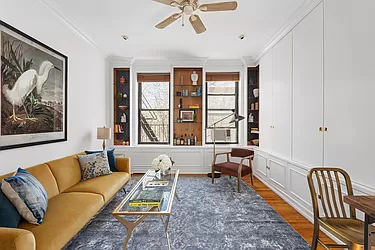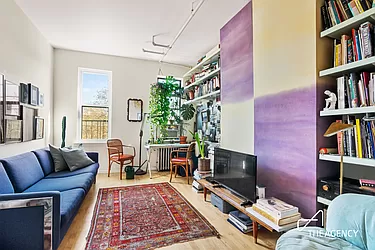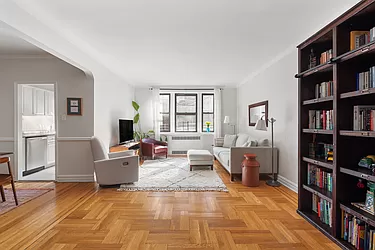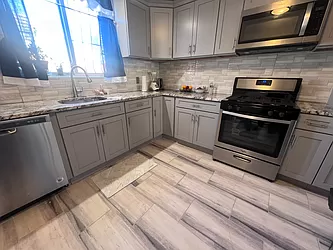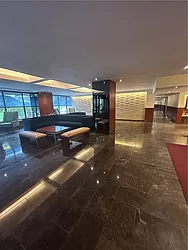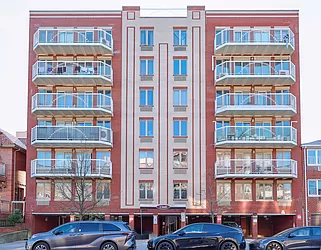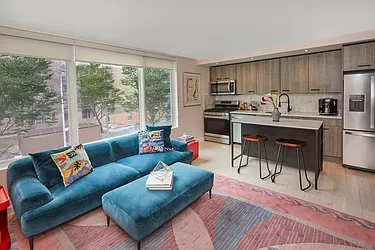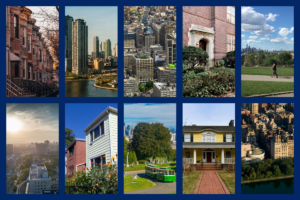Bookended by the Brooklyn Bridge and the Manhattan Bridge along Brooklyn’s historic waterfront, there’s a neighborhood where—in just a few decades—abandoned warehouses have transformed into some of the city’s most coveted home and retail addresses. It’s DUMBO, and there’s nothing dumb about it.
Table of contents
Where Is DUMBO?
Like Manhattan’s TriBeCa, SoHo and NoHo, the neighborhood’s name hints at its location: Down Under the Manhattan Bridge Overpass. Most of DUMBO is in between the Brooklyn and Manhattan bridges as they make landfall in Brooklyn. Another section east of the Manhattan Bridge continues for a few blocks until it becomes Vinegar Hill and the Navy Yard.
The acronym name wasn’t widely known until the late 1990s, when the area emerged as one of the city’s most expensive neighborhoods. And the prices here are still skyline high. You’re looking at a median sales asking price of $2.2 million and median rental asking price of $4,500 as of January 2022 according to StreetEasy’s Market Data Dashboard. That’s compared to $1.5 million for sales for Manhattan and $899,900 for Brooklyn. It’s a similar story for rentals: median asking rent in Manhattan is $3,700, and it’s $2,722 in Brooklyn overall. “It’s expensive to live here,” says Liz Schwartzberg, a broker with Compass. “But it’s all about the views.”
DUMBO Homes Under $1M on Streeteasy Article continues below
A Brief History of DUMBO
For most of New York City’s history, DUMBO was considered part of nearby Vinegar Hill. This riverfront corner of Brooklyn was home to a ferry landing and a collection of manufacturing warehouses and factories. In one of those factories in 1890, a Scottish immigrant named Robert Gair invented the pre-cut cardboard box. As a result, the neighborhood was known as “Gairville” for years.
Eventually, the factories closed and by the 1970s the district had become a hub for artists, who used the large spaces for studios. It was this creative crowd that coined the name “DUMBO.” However, the moniker wasn’t popularized until the late 1990s. It was during that period that developer David Walentas purchased many buildings in the area. He renovated some into offices, and others into glitzy condominiums. Soon, new residents were moving in. In 1998, The New York Times wrote of Walentas’ desire to “turn the area into a SoHo-like neighborhood.” Nearly 25 years later, that dream seems to have come true, as DUMBO today is now home to some of Brooklyn’s best shopping and dining. Additionally, a host of tech companies such as Etsy and smaller incubators are headquartered there.
What Type of Housing Options Are in DUMBO?
The entire neighborhood was added to the National Register of Historic Places in 2000, and many of the buildings are former factories. Some of them once churned out household name products, like Benjamin Moore paints and Brillo pads.
Today, most are either offices and housing. “It’s a small neighborhood,” says Schwartzberg, who lives in nearby Brooklyn Heights. “It’s all condos and rental buildings. There’s really almost no co-op inventory in DUMBO, which drives condo prices up even more.” And not everything is in a converted factory. Schwartzberg cites a clutch of new, “snazzy” developments, including the rentals at 60 Water Street and the condos of One John Street. And potentially snazziest of all is Olympia Dumbo. The 33-story, curving high-rise will be the tallest building in DUMBO, with 76 condos.
“It offers expansive homes, stunning views, and state-of-the-art amenities,” say Fredrik Eklund and M. Monica Novo, licensed brokers with The Eklund Gomes team and Douglas Elliman, respectively. Among those amenities? Indoor and outdoor pools, a full-size outdoor tennis court and ship-inspired playground, plus an indoor bowling alley, spin studio, boxing gym, and more.
Brooklyn Homes Under $750,000 on Streeteasy Article continues below
What Are the Commute Times from DUMBO?
Getting from DUMBO into Manhattan is a cinch, with easy road, subway, and ferry access. It takes around 15 minutes to get to 42nd Street from the neighborhood’s two closest subway stations, York Street (just east of the Manhattan Bridge) and High Street (just south of the Brooklyn Bridge).
For a more scenic commute, the NYC Ferry is one of the neighborhood’s best assets. It whisks passengers across the East River to the Financial District at Wall Street in just four minutes, or uptown to the 34th Street ferry landing in around 35 minutes (with stops in Williamsburg along the way).
By car, the ride from DUMBO across either bridge and up to Midtown can take as little as 15 minutes, although with traffic that can balloon to 45 minutes.
A Waterfront Wonderland: Brooklyn Bridge Park
The East River waterfront in DUMBO has gone from gritty industrial port to one of New York’s most photogenic swathes of greenery. That’s all thanks to Brooklyn Bridge Park, which starts in DUMBO by the Manhattan Bridge and extends south for more than a mile past the Brooklyn Bridge. The park’s sections in DUMBO are home to winding paths that skirt along the water through groves of trees with epic skyline views framed by the two bridges. And in December 2021, the city unveiled the last parcel of the park to be completed: Emily Warren Roebling Plaza. It’s a vast public space directly underneath the Brooklyn Bridge, circling the bridge’s massive stone tower.
What to See in DUMBO
“DUMBO has become an international destination,” say Eklund and Novo. “It truly is the waterfront TriBeCa of Brooklyn, having the reverse–and better–view of the dramatic NYC skyline.” Schwartzberg agrees, saying, “The neighborhood and its entire waterfront make it a great place to stroll around.” She mentions Brooklyn Bridge Park and Jane’s Carousel, a century-old merry-go-round that was given new life under a glass roof by architect Jean Nouvel.
Schwartzberg also notes the shopping and dining options in the area. These include TimeOut Market New York. Here, outposts of legendary New York food institutions like Ess-A-Bagel and Jacob’s Pickles bring the flavors of the city all under one roof (and to a river-facing outdoor terrace).
As for taking in the views, the intersection of Water and Washington streets is where to go for the most Instagrammable photo opp. Photographers (professional and amateur) flock here for an iconic look at the sky-blue Manhattan Bridge set between the red brick warehouse buildings.
Another neighborhood star is St. Ann’s Warehouse. Inside a former tobacco warehouse, this waterfront theater hosts concerts and award-winning theater productions. With so much packed into just 35 acres, DUMBO punches above its weight. “It truly is the It-neighborhood of greater New York,” say Eklund and Novo.
